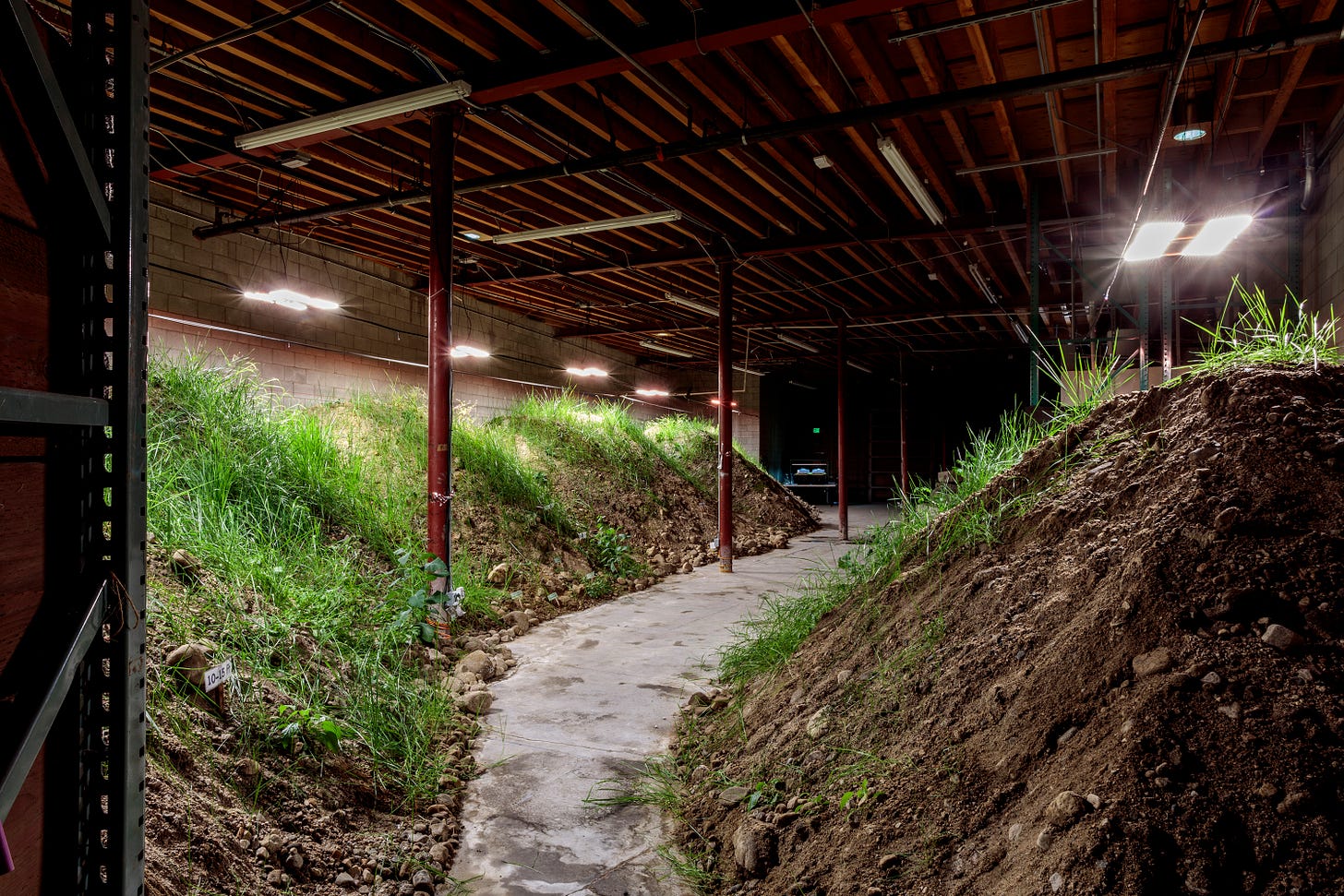Un-development with Metabolic Studio
An Introduction to our Un-development 2 tours

This fall at Metabolic Studio, we have been giving tours of Un-development 2, a warehouse in the process of transformation, on its way to becoming a new riverbed for the Los Angeles River. We’re also running workshops and teach-ins to gather an engaged cohort of “un-developers” putting together proposals for projects of their own, and building a supportive community of mutual care.
We’re publishing selected excerpts from these tours, including audio and video, so you can take part from wherever you are. Today’s video is the introduction to our tour, followed by an audio clip about how we use and process the wild clay we find on site. We’ve also included transcripts.
We’re currently developing our program for next year, so comment below and let us know what you’d like to see next!
Introduction to Un-development 2 Tours
Welcome to Metabolic Studio. My name is Andrea, and I'm going to give you a little bit of an introduction to the project today. We are standing here at the Metabolic Studio site, and I hope you all have had a chance to visit the LA State Historic Park, which is right across the street.
Before it was a park, it was a train yard, considered a brownfield (site) here in Los Angeles and in 2005, Lauren Bon created a one-year agreement with the State Park System to plant a 32-acre cornfield. And that project had multiple benefits. It was, a) to clean the soil - we know that corn is a phytoremediator. And b) also to bring a new perspective to what this space could be.
While that corn was growing, it was clear that the corn needed water. And the LA River is right here. It just makes sense to water this piece of land with the LA River water. If you can imagine where we are today without all the concrete, without all the asphalt, without all these buildings, this was the floodplain of the Los Angeles River. As the rains came down, this area would have flooded, and this area would have gotten all of its water needs for the year, because it was the floodplain. It was a very fertile piece of land.
So, Lauren took some water trucks down there, just filled them up and watered the corn, until the City (of LA) folks told her that she can't do that for many reasons, liability being a big one. Lauren asked “What if we were able to water this piece of land with water from the Los Angeles River?” That created a project that we call Bending the River. And this project's been going on for over ten years, and we are now almost on the 20-year anniversary of the Not a Cornfield project.
What we have now built, is a well on our property called “the Mother Well.” We have infrastructure in the LA River channel that will help move the water from the LA River low-flow channel into the well so that eventually we can water LA State Historic Park.
All these projects along the way have created smaller projects that we sort of think of as tributaries to the river. We're going to talk about the soil that came from the Mother Well, and the concrete in the material that we pulled out of the river, in order to do the construction. What did we do with that material?
And then we have a lot of soil remediation that has been done in order to prepare for this water to come in to the property. So we have all that we want to share with you today, and all kinds of soil repairing methodologies that we've tried here at our studio.
Using Wild Clay at Metabolic Studio
I'm Alex Tanasi. I'm a ceramicist here at the studio. So here's a continuation of the extracted soil from the Mother Well. This is a lot different than what you saw in the other room, which is floodplain. This is gonna be underneath the floodplain. This is going to be about 50 feet down. This has had the most contact with water for many, many years, not having too much endemic life in it, but the stones and in all the silt that makes this soil is, maybe millions of years old.
So a long time ago, this used to be a sea bed. We know this because there were whale bones found in Lincoln Heights just on the other side of the LA River. So there's going to be a lot of plant life. There's all these organics that are in there, nutrients that should be thought of in any kind of remediation project or making any kind of soil; potassium, calcium, sodium, magnesium and iron.
Behind me, you're going to see where we process clay by filtering it through water and drying it out. One of the things you could do when you do find clay is use it in utility or use it for irrigation. These are some of the things that we're practicing.
The olla is a porous pot. This is buried in the ground and it leaches out water for irrigation. And other ways that we're practicing is by making things with the public, you're seeing behind me things that we've done. This is part of the practice of not just making things, but sharing the stories, working with schools as well to teach the importance of this clay and using it as a utility.




